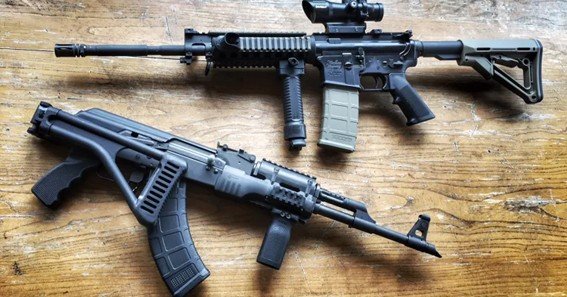The debate between the AR-15 and AK-47 rifles has been a longstanding topic among firearm enthusiasts, military personnel, and law enforcement agencies. Both rifles have distinct characteristics, advantages, and limitations that cater to different preferences and operational requirements.
Introduction
The AR-15 and AK-47 are two of the most recognizable rifles globally, each with a rich history and a significant impact on firearm design and military strategy. Understanding their differences is crucial for enthusiasts, potential buyers, and professionals in the field.
Design and Origin
- AR-15: Developed in the 1950s by American engineer Eugene Stoner, the AR-15 was designed as a lightweight, air-cooled, gas-operated, magazine-fed rifle. Its design emphasizes modularity, allowing users to customize various components easily.
- AK-47: Introduced in 1947 by Soviet engineer Mikhail Kalashnikov, the AK-47 is renowned for its simplicity and durability. It features a gas-operated, rotating bolt design and is constructed to function reliably under harsh conditions.
Caliber and Ammunition
- AR-15: Chambered primarily in 5.56×45mm NATO or .223 Remington, the AR-15’s ammunition is lighter, allowing soldiers to carry more rounds. This caliber offers higher velocity and flatter trajectory, contributing to its accuracy.
- AK-47: Utilizes the 7.62×39mm cartridge, known for its stopping power and penetration capabilities. However, the heavier ammunition results in increased recoil and reduced capacity for the same weight compared to the AR-15.
Accuracy and Range
- AR-15: Known for superior accuracy, the AR-15’s effective range extends up to 600 meters, making it suitable for precision shooting. Its design and ammunition contribute to consistent performance at various distances.
- AK-47: While reliable, the AK-47 has an effective range of approximately 400 meters. Its design prioritizes durability over pinpoint accuracy, which can result in a wider shot dispersion.
Reliability and Durability
- AR-15: Requires regular maintenance to ensure optimal performance. Its tighter tolerances can make it more susceptible to malfunctions in dirty or harsh environments.
- AK-47: Celebrated for its ruggedness, the AK-47 operates reliably in extreme conditions, including exposure to dirt, mud, and sand. Its loose tolerances and robust construction contribute to its legendary dependability.
Ergonomics and Customization
- AR-15: Offers extensive customization options, including adjustable stocks, various sighting systems, and accessory attachments. Its ergonomic design caters to user comfort and adaptability.
- AK-47: While customization options exist, they are more limited compared to the AR-15. The AK-47’s design is straightforward, focusing on functionality over modularity.
Cost and Availability
- AR-15: Generally priced higher, especially when considering aftermarket accessories and customization. However, its popularity in the United States ensures widespread availability.
- AK-47: Typically more affordable and globally prevalent, the AK-47 is accessible in various markets, though availability may vary based on regional regulations.
Conclusion
Choosing between the AR-15 and AK-47 depends on individual needs and preferences. The AR-15 excels in accuracy, customization, and modern ergonomics, making it suitable for users seeking precision and adaptability. In contrast, the AK-47’s reliability, durability, and simplicity make it a preferred choice for those prioritizing ruggedness and ease of maintenance.
FAQs
1. Which rifle is more suitable for beginners?
The AR-15’s ergonomic design and lower recoil make it more approachable for new shooters.
2. Can I use an AR-15 or AK-47 for hunting?
Yes, both rifles can be used for hunting, but it’s essential to ensure compliance with local hunting regulations and select appropriate ammunition for the game.
3. Are there legal restrictions on owning these rifles?
Ownership laws vary by region. It’s crucial to consult local regulations to determine the legality of possessing either rifle in your area.
4. How does ammunition cost compare between the two?
Generally, 7.62×39mm ammunition for the AK-47 is more affordable than 5.56×45mm NATO or .223 Remington rounds for the AR-15, but prices fluctuate based on market conditions.
5. Which rifle has better aftermarket support?
The AR-15 boasts a more extensive aftermarket ecosystem, offering a wide array of accessories and customization options.










